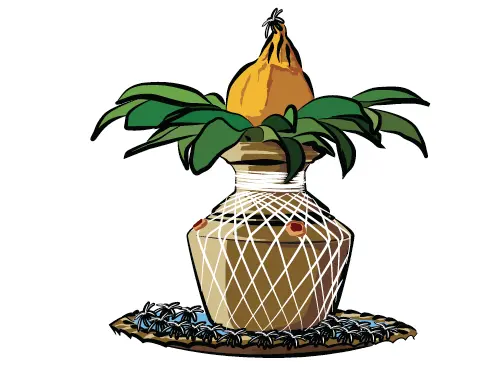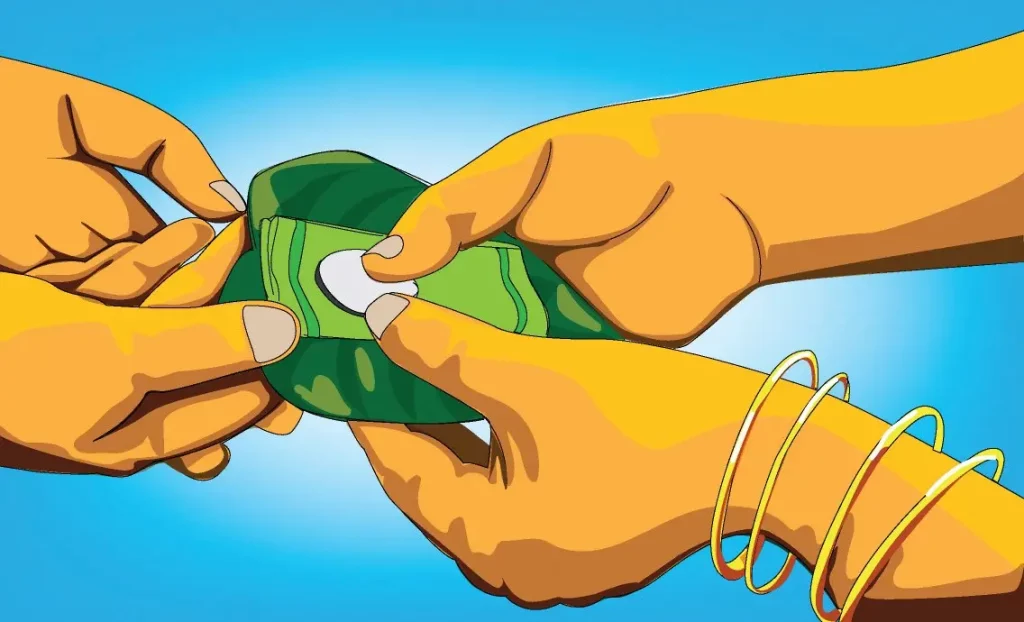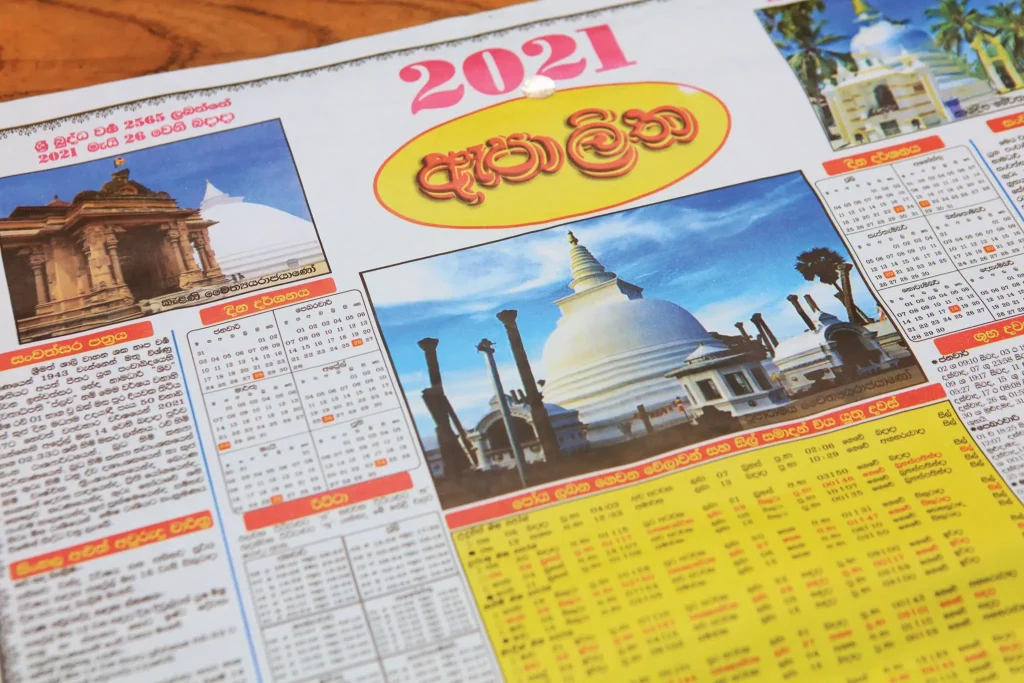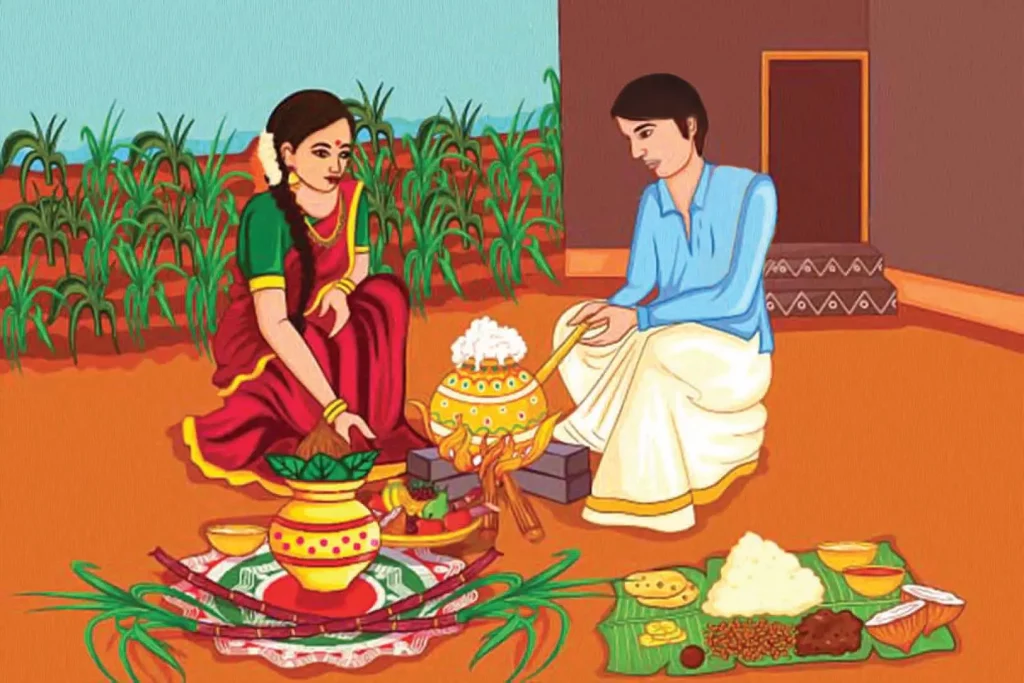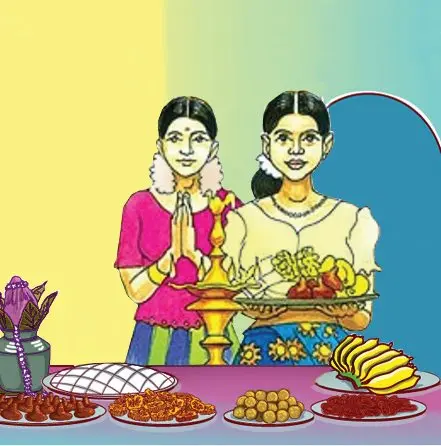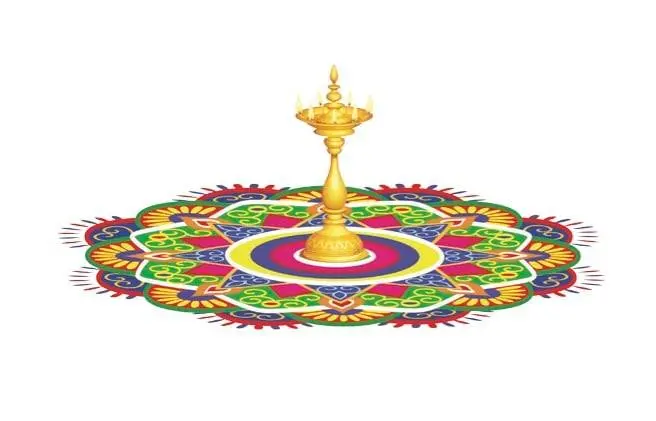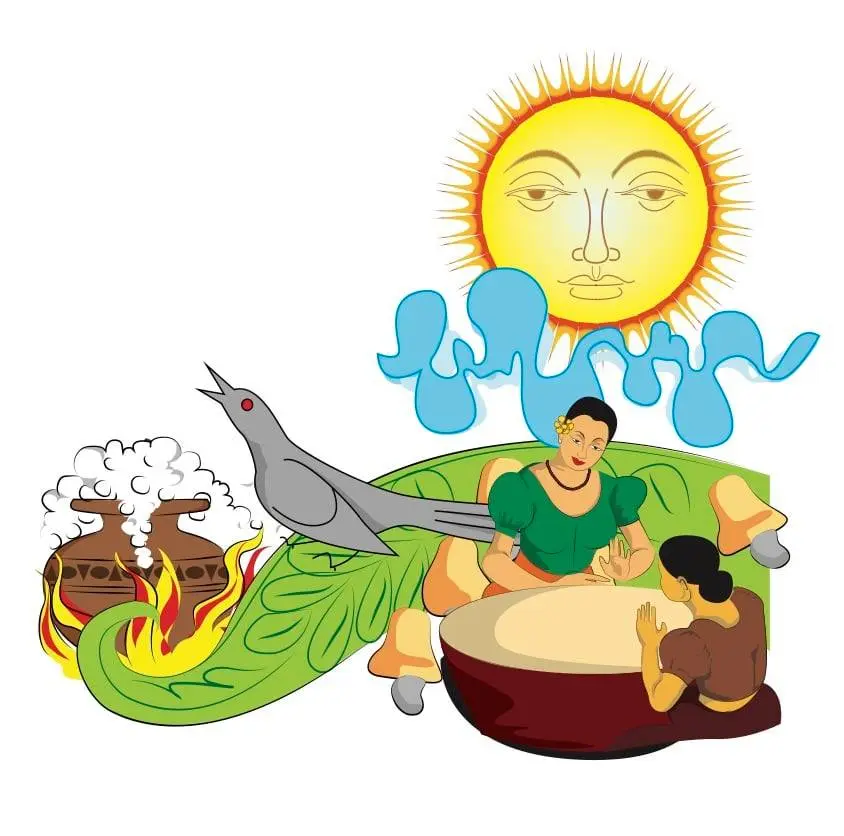
April heralds the Sinhala and Hindu New Year in Sri Lanka, an annual event of great proportions, whose origins are obscured in the course of history.
Words Jennifer Paldano Goonewardane. Illustrations by Sujith Heenitigala.
April in Sri Lanka is the month of festivities. It is a holiday season when Sri Lankans go to great lengths to celebrate the traditional New Year with unprecedented grandeur. Together with traditional rituals performed according to auspicious times, games, and festivities with tables laden with Sri Lankan delicacies and sweetmeats, the Sinhala and Hindu New Year is a time of strengthening family ties cultural significance.
The traditional new year is celebrated in April, and it signifies the motion of he sun. The New Year celebrated by the Sinhala Buddhists, and Tamil Hindus are determined according to the sun’s movement relative to the earth. The sun’s complete cycle along the constellations was accepted as the beginning of a calendar year by farming societies like Sri Lanka. It marks the gathering of the harvest, celebrated with thanksgiving and homage to the sun.
In Sinhala, the April New Year is called the ‘avurudda’, when separated, ‘avur’, means the sun, and ‘idda’ means of summiting. The sun at its highest point is when it shines directly on the equator. Since Sri Lanka is situated close to the equator, it experiences this phenomenon strongly in March and April.
In fact, people believe that the sun enters Sri Lanka at Dondra Head in the South at the beginning of April, grad- ually peaking and moving towards Point Pedro in the North. It takes another 365 days to enter Dondra again, which is distinctive to Sri Lanka. Ac- cording to astrologers, the sun begins its transit from Pisces (Meena Rashiya) and comes to reside at Aries (Mesha Rashiya) on April 14th each year.

As for the Hindus who follow the Tamil Calendar – the Panchangam, which is based on the sun’s cycles and the moon, the year begins on the first day of spring – 14th April. Hence, Tamil Hindus in other countries had celebrated the event initially as a spring festival.
Customs and rituals are followed with utmost devotion, that even today, what makes the New Year stand out is the narrative around the practices that are faithfully observed at ‘auspicious’ times.
The first reference to the celebration of the New Year as it’s practiced today can be traced to the 18th century. State patronage and adherence to rituals are expected of the ‘leader’ by the citizenry, and 18th century Sri Lanka had been similar, where the king had spent the inauspicious time ‘Nonagathaya’ before the dawn of the New Year at the Temple of the Tooth. State patronage then had extended to the supply of herbs and utensils to prepare a special herbal mixture known as ‘naanu’ to the temples of Asgiri and Malwathu. The royal astrologer determined the auspicious time for every activity associated with the New Year. Auspicious times for the festival are sanctioned by the State to this day.
The king, surrounded by his chiefs, heralded the New Year from his throne. In the 18th Century in the Kandyan Kingdom, some of the pre-new year celebrations of yore had been more elaborate, with lighted tapers and a silver dish with unhusked rice and turmeric water, ‘naanu’ had been applied to the king’s head and body. They invoked long life on the monarch. Similarly, today, New Year rituals commence with the application of ‘naanu’ prior to the ceremonial bath on the last day of the old year.
Food is all about identity and cultural symbolism; it’s a big part of the celebration, fostering harmony by sharing around a table. The traditional New Year is a burst of gastronomic delights. The preparation of food described as ‘ahara pisima’, is initiated to this day at an auspicious time. The king led the way in the palace kitchen and was the first to consume the food prepared at the auspicious time, described in Sinhala as ‘ahara anubhavaya’. He was followed by his courtiers. This was more a ceremonial exercise followed by a royal feast in the evening, where the king and his courtiers dined communally. There had been two days of holidays for the festival when the people ceased all work and outings. In addition to the two days of holidays, today, people extend their time off work to frolic with family and friends in their villages.
But how did the New Year come to be known as the Sinhala and Hindu New Year? It’s believed that the Nayakkar kings of the Kandy Kingdom, who were originally Hindus, shifted the festival to April from March to fall in line with the Tamil New Year called Chiththirai. Then in the 19th century, in response to demands for the day to be declared a public holiday, the British administrators introduced the National Holiday Bill. Still, in saying it a public holiday in 1885, the authorities named it the Sinhala and Hindu New Year.
It’s rather the similarities and not the differences that have bound the two communities during this beautiful annual festival. For instance, the Tamil Calendar ‘Panchangam’ is based on Vedic astrology; the Sinhala people’s calendar for the April New Year is also known as the ‘Panchanga Litha’. Derived from Sanskrit, Panchanga means five limbs or five attributes of the day: Vara, Thithi, Nakshatra, Yoga, and Karana. The auspicious times for the April New Year celebrated by the Sinhala and Tamil-speaking Hindu people are chartered according to the same astrological principles.
Whatever its origins and links, the Sinhala and Hindu New Year was an ode to nature, astrology, and a self- sustained ecosystem; it was a celebration by those who followed the sun’s movement and the moon the planets to arrange events in their day to day lives. To this day, the Sinhala and Hindu New Year traditions are celebrated with great festivity, and communities come together in peace and harmony.
